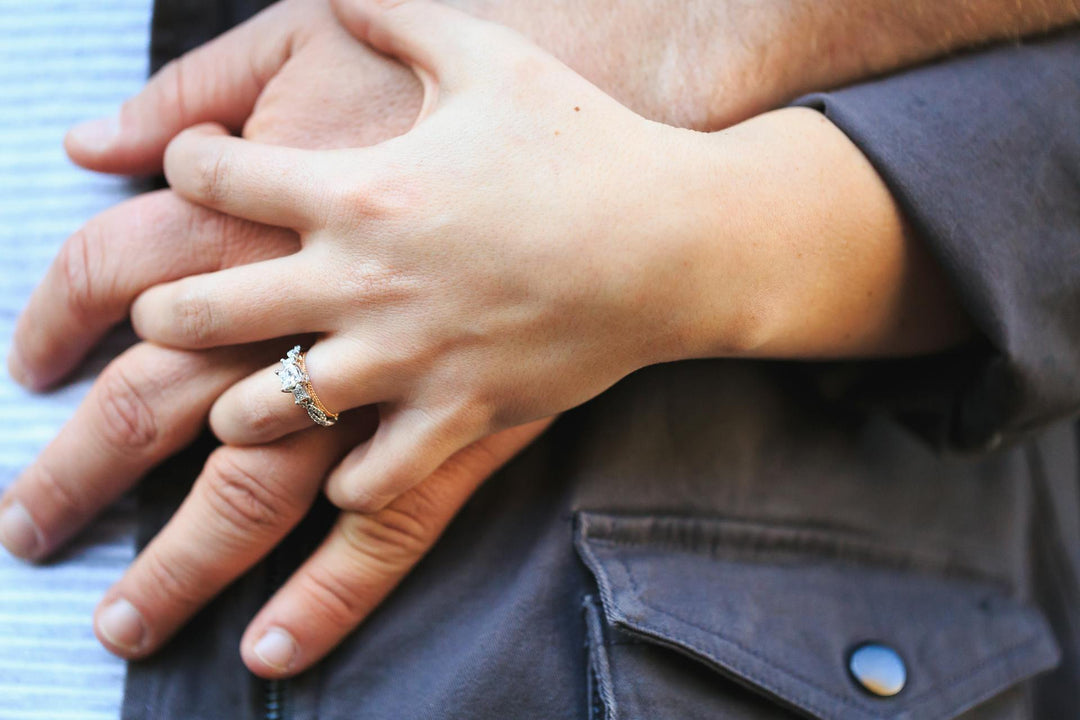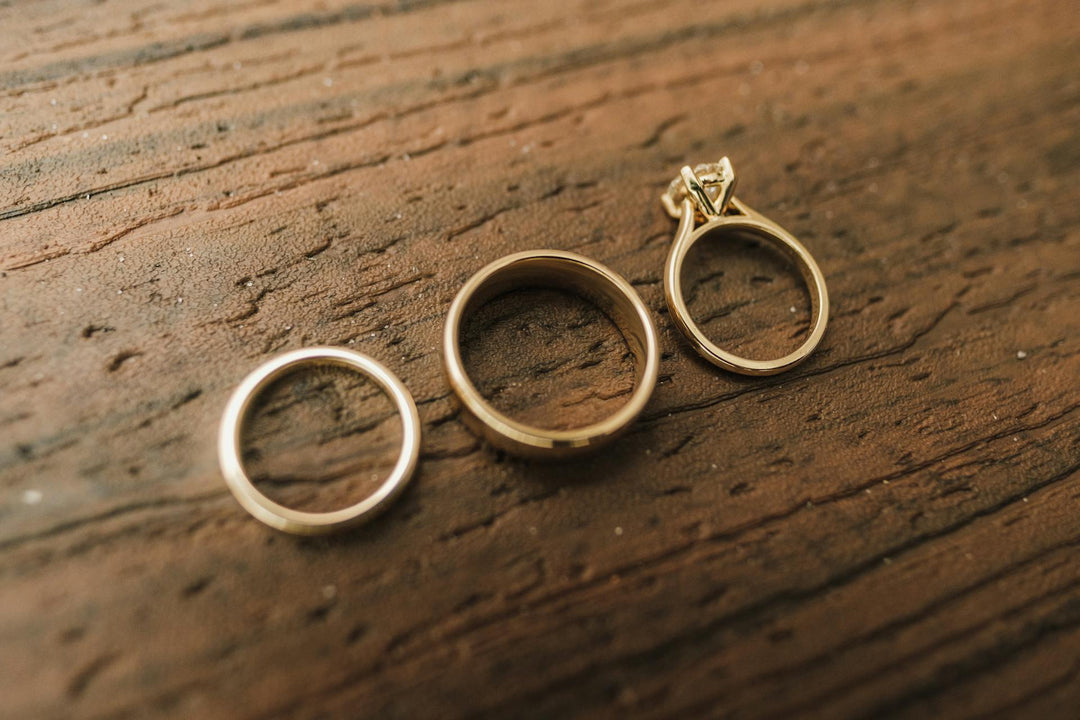Rings are versatile pieces of jewelry that come in a variety of styles, each serving different purposes and symbolizing various meanings. Here's a comprehensive overview of the different types of rings:
By Occasion or Meaning:
-
Engagement Rings:
- Typically given during a marriage proposal.
- Often feature a prominent gemstone, commonly a diamond, and are designed to symbolize commitment and love.
-
Wedding Rings (Bands):
- Exchanged during the wedding ceremony.
- Usually simpler in design compared to engagement rings and worn as a symbol of marital union.
-
Anniversary Rings:
- Given to commemorate significant anniversaries.
- May feature multiple stones or unique designs that represent the years together.
-
Promise Rings:
- Symbolize a commitment or promise between two people.
- Can be given for various reasons, not necessarily romantic, and are often simpler than engagement rings.
-
Purity Rings:
- Also known as chastity rings, worn as a symbol of a vow to remain abstinent until marriage.
- Usually simple in design and sometimes engraved with a message.
-
Friendship Rings:
- Exchanged between friends as a symbol of their bond.
- Often feature intertwined designs or matching sets.
-
Signet Rings:
- Traditionally worn by men and used to bear a family crest or monogram.
- Historically used to seal documents with wax.
-
Class Rings:
- Commemorate graduation from high school or college.
- Often personalized with the school emblem, year of graduation, and other significant details.
-
Mother’s Rings:
- Typically feature the birthstones of a mother's children.
- Designed to celebrate motherhood and family.
-
Birthstone Rings:
- Feature a gemstone representing the wearer's birth month.
- Popular for personalizing jewelry.
By Style or Design:
-
Solitaire Rings:
- Feature a single prominent gemstone.
- The setting can vary, but the focus is on the solitary stone.
-
Halo Rings:
- Surround the central gemstone with a halo of smaller stones.
- Enhances the appearance and brilliance of the central stone.
-
Three-Stone Rings:
- Feature three gemstones, often symbolizing the past, present, and future.
- Popular for anniversaries and engagements.
-
Cluster Rings:
- Comprise several smaller stones grouped together to create a larger, more intricate design.
- Can give the appearance of a larger central stone.
-
Eternity Bands:
- Feature a continuous line of gemstones around the entire band.
- Symbolize unending love and commitment.
-
Channel Set Rings:
- Have gemstones set into a channel within the band, creating a sleek, streamlined look.
- Offer a secure setting for the stones.
-
Pavé Rings:
- Feature small gemstones set closely together, covering the band’s surface.
- Creates a sparkling, diamond-encrusted appearance.
-
Celtic Rings:
- Incorporate traditional Celtic designs, such as knots or Claddagh symbols.
- Rich in cultural and symbolic meaning.
-
Vintage and Antique Rings:
- Feature designs inspired by or originating from specific historical periods.
- Often more intricate and unique compared to modern designs.
-
Cocktail Rings:
- Bold and oversized, often featuring large, colorful gemstones.
- Designed to make a statement, typically worn at social events.
By Materials:
-
Gold Rings:
- Available in yellow, white, and rose gold.
- Gold is a classic and versatile metal choice.
-
Platinum Rings:
- Known for their durability and hypoallergenic properties.
- Often used for engagement and wedding rings due to their lasting quality.
-
Silver Rings:
- More affordable than gold and platinum.
- Can tarnish over time but is easily polished.
-
Titanium Rings:
- Lightweight, strong, and resistant to corrosion.
- Popular for men’s wedding bands.
-
Tungsten Rings:
- Extremely durable and scratch-resistant.
- Ideal for those who need a hard-wearing ring.
-
Palladium Rings:
- Part of the platinum group of metals, known for its white color and durability.
- Offers a similar look to platinum at a lower price point.
-
Stainless Steel Rings:
- Affordable and durable.
- Often used for fashion rings and men's jewelry.
-
Wood Rings:
- Feature natural wood as part of their design.
- Unique and often combined with metal for a modern look.
-
Ceramic Rings:
- Made from high-tech ceramic materials.
- Durable and often used for fashion-forward designs.
-
Silicone Rings:
- Flexible and safe, often worn during activities where metal rings might be impractical or dangerous.
- Popular among athletes and those in physically demanding professions.
By Setting:
-
Prong Setting:
- Uses metal prongs to hold the gemstone in place.
- Maximizes the visibility and brilliance of the stone.
-
Bezel Setting:
- Encircles the gemstone with a metal rim.
- Offers a secure and modern look.
-
Tension Setting:
- Holds the gemstone in place through the tension of the metal band.
- Creates a floating appearance for the stone.
-
Bar Setting:
- Uses metal bars on either side of the gemstone to hold it in place.
- Similar to channel setting but with gaps between the stones.
-
Gypsy Setting:
- Sets the gemstone flush with the surface of the ring.
- Offers a sleek and understated look.
Specialty Rings:
-
Stackable Rings:
- Designed to be worn together in multiples.
- Allow for personal customization and mixing different styles.
-
Spinner Rings:
- Feature an outer band that spins around a stationary inner band.
- Often used for stress relief and meditation.
-
Mood Rings:
- Change color based on the temperature of the wearer’s skin.
- Popular in the 1970s and still enjoyed as novelty items.
-
Toe Rings:
- Worn on the toes, often simple and thin.
- Popular in various cultures, especially in South Asia.
-
Midi Rings:
- Designed to be worn on the upper part of the finger, between the knuckle and fingertip.
- Trendy and often stacked with regular rings.
Cultural and Traditional Rings:
-
Claddagh Rings:
- Irish rings featuring a heart, crown, and hands.
- Symbolize love, loyalty, and friendship.
-
Poison Rings:
- Have a compartment for holding small items, historically used for concealing poison.
- Often elaborate and ornamental.
-
Navajo Rings:
- Crafted by Native American Navajo artisans.
- Feature intricate designs and often turquoise stones.
-
Kokoshnik Rings:
- Russian rings inspired by traditional headdresses.
- Characterized by detailed filigree and often floral designs.
-
Gimmel Rings:
- Consist of two or more interlocking bands that fit together to form a single ring.
- Historically used as betrothal rings.
Each type of ring carries its own unique characteristics and significance, making rings one of the most personal and expressive forms of jewelry.





